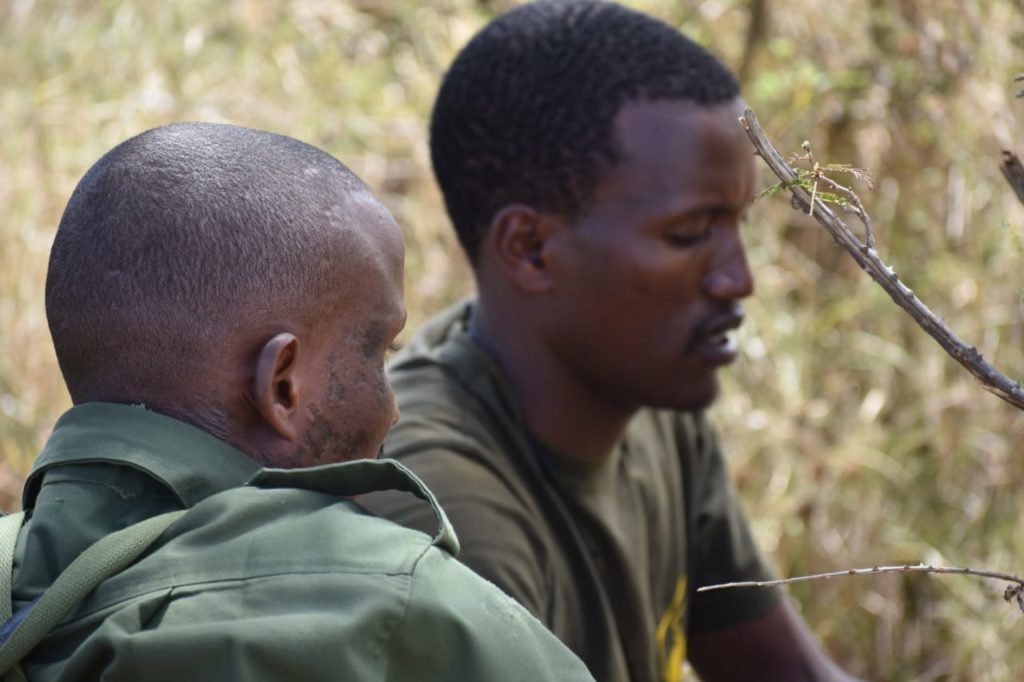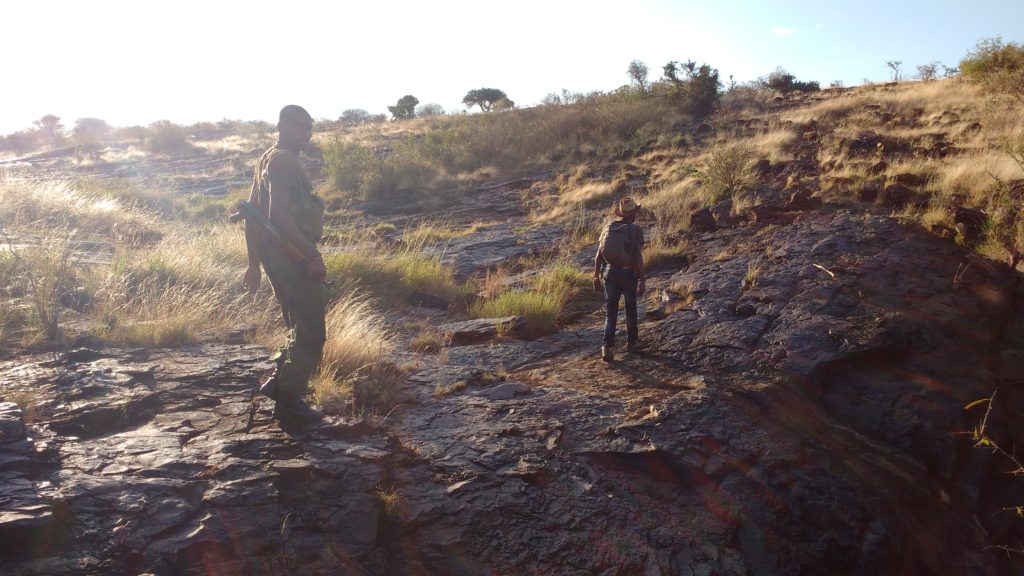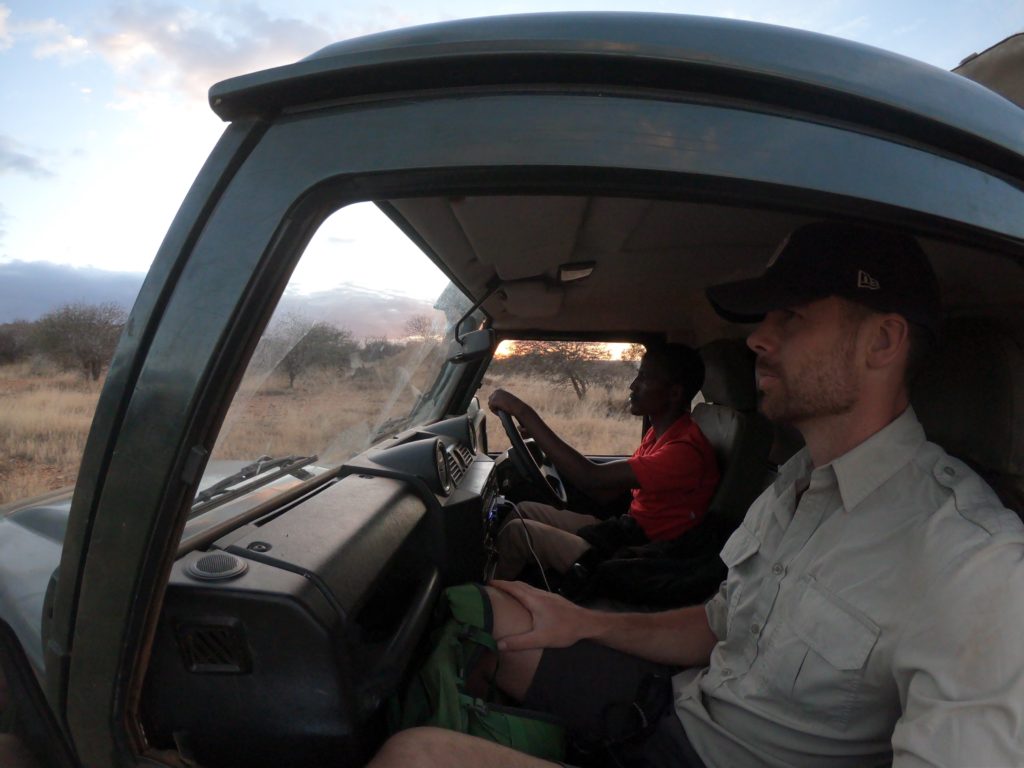
When leopard conservation research assistant, Ambrose Letoluai, sent me footage of a melanistic (black) leopard mother with cubs that our cameras had captured in Kenya’s Mpala Research Centre, I was overjoyed.
Over the past few months, Ambrose and I have been determined to record young cubs on San Diego Zoo Global’s remote cameras, adjusting the camera placements as necessary. It was during my last Kenya site visit in February 2019 that we fine-tuned camera positions in Mpala with Limo Lempaira, a leopard conservation field assistant, and Tony Lokorodi, a Mpala security assistant, who had originally recommended the site where we found the leopard family.

Back in October 2018, we placed a camera into this area and we were sure we would find a leopard, yet the first four months brought us no recordings. The habitat was promising because it was rocky kopjes and hills, areas perfect for a female leopard to protect young cubs in the early days of their lives, when they are small and vulnerable. We had even found some remains of consumed prey.
In February 2019, we moved the camera only about 20 feet—and immediately, we were rewarded with beautiful footage of a leopard mother and her two cubs. Not only was this the first footage of cubs in our study, but the fact it was a black leopard made the finding that much more exciting.
As it turns out, sometimes it’s better to just adjust slightly than to give up entirely.
This new finding is important in a number of ways. First, it helps us understand where important denning habitat is in our study area, which is vital to protecting the next generation of leopards.
Second, this footage also indicates that black leopards are breeding on Mpala. It has been hypothesized that the dark coloration of black leopards may be an adaption to shaded habitats—but finding breeding black leopards here challenges that notion, because the environment is semi-arid with no dense forest cover.

Finally, this footage showcases the genetic inheritance of the melanistic trait. The black leopard mother has a golden cub and a black cub, which follows what we understand about the recessive inheritance of melanism. It is almost certain that she mated with a golden male that also carried a copy of the recessive black gene, which resulted in one black cub (recessive coloration) and one golden (dominant coloration).
After finding the videos on the camera, Ambrose remarked to me how important it was for leopard conservation to see this black leopard mother care for her new young. I couldn’t agree more.

Nicholas Pilfold, Ph.D., is a scientist in Population Sustainability at the San Diego Zoo Institute for Conservation Research. Read his previous post, Andean Bears and the Stalking of Stalk.




